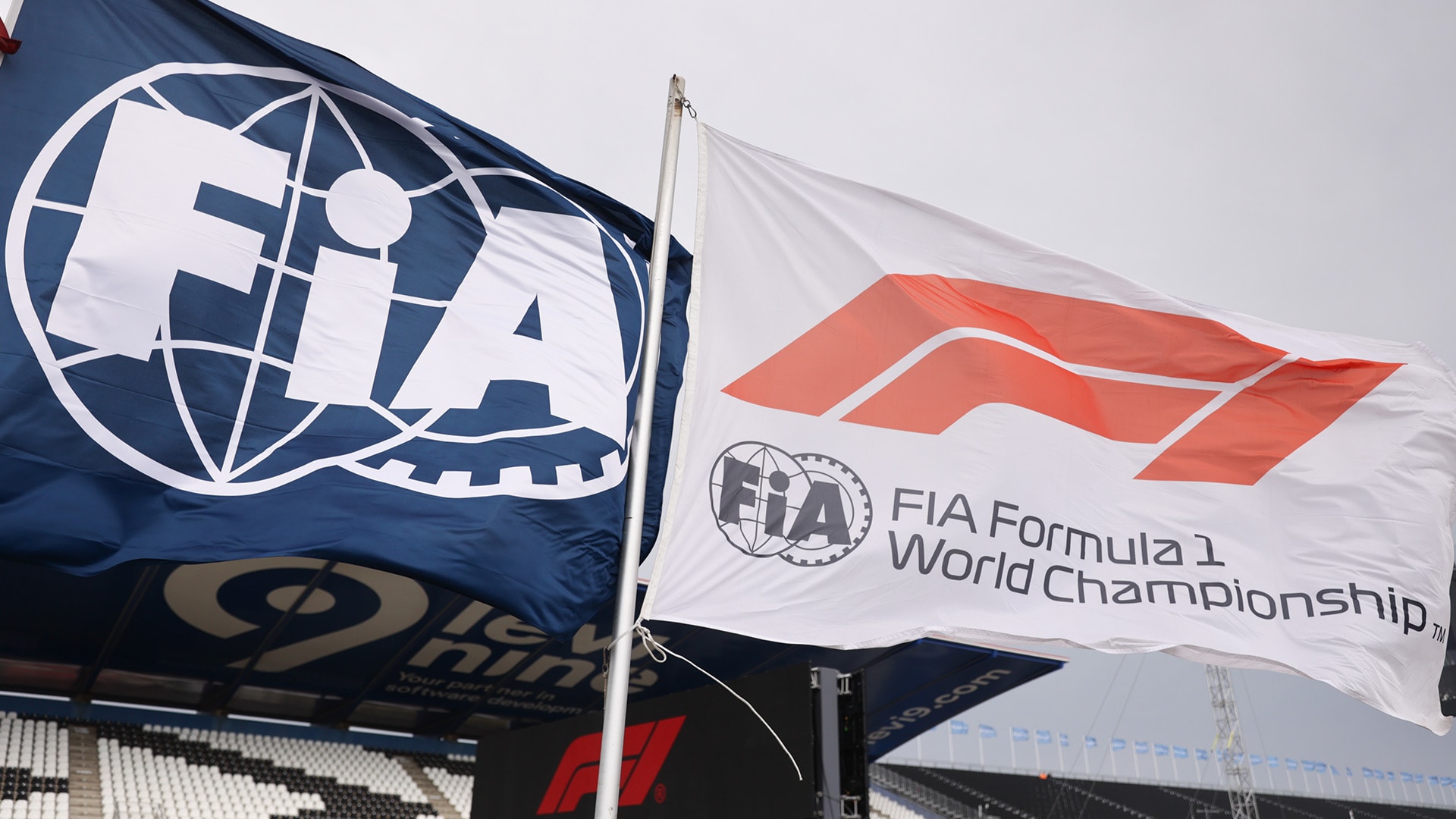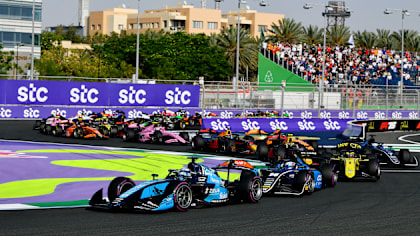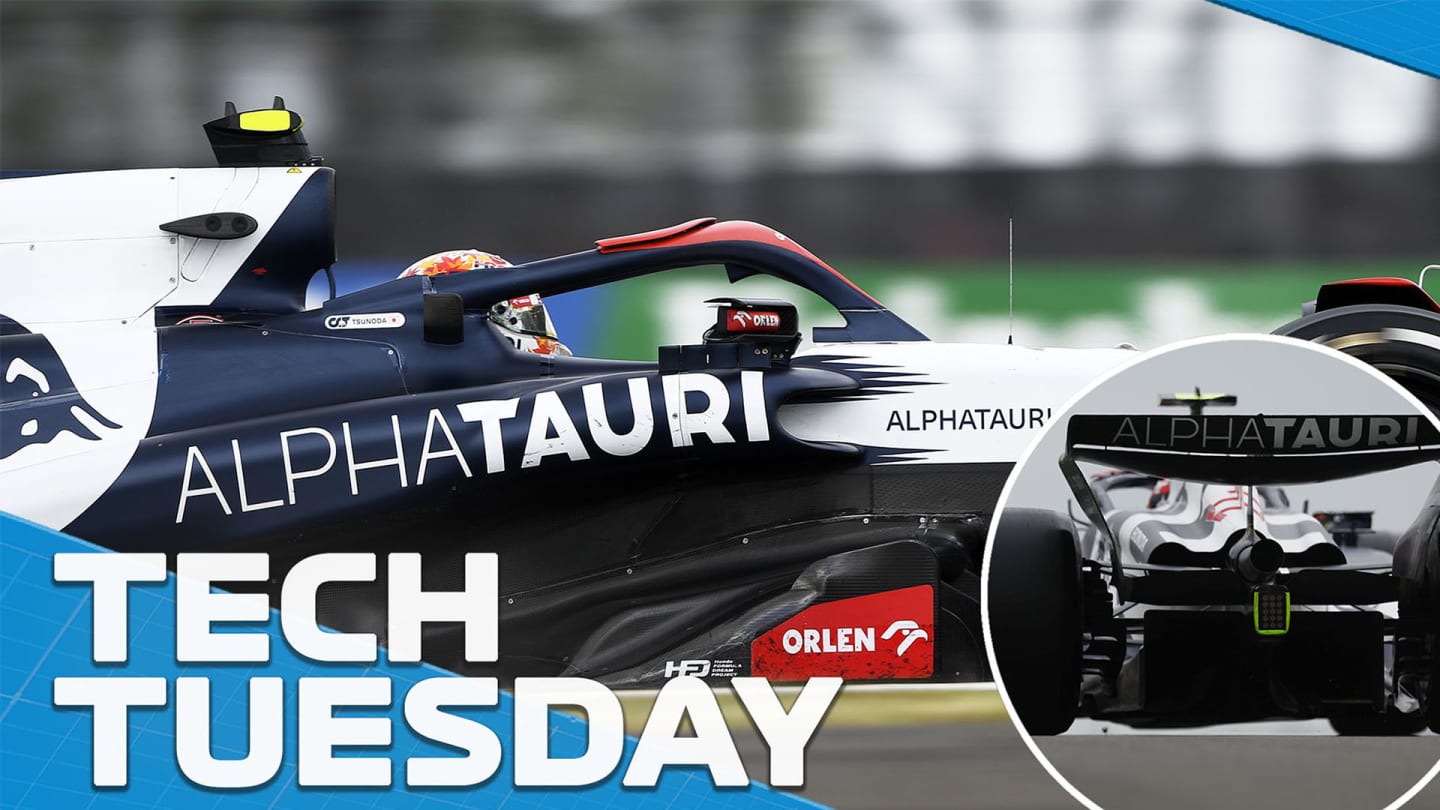
Technical
TECH TUESDAY: Breaking down the AlphaTauri upgrades that Ricciardo will race in Hungary

Share

The AlphaTauri AT04 has not been the greatest of the sister Red Bull team’s cars of recent years. Its average qualifying pace is better only than the Alfa Romeo, and its main shortfall has been in slow corners where its downforce has been relatively weak as the rear ride height increases.
A big update introduced at the British Grand Prix has been months in the planning and is specifically targeted at improving that rear end grip in slow corners. There is a second phase to this upgrade, which is scheduled to appear this weekend in Budapest – where it will be raced by Yuki Tsunoda and his new team mate Daniel Ricciardo.
The Silverstone part of the upgrade was based around a new floor, upper bodywork and diffuser. There was also a new version of the medium downforce rear wing, though this was a separate development.
Tunnel inlet area
Boosting the underfloor performance by redirecting the airflow starts at the tunnel inlets. The leading edge of the floor has been raised, increasing flow volume through the underfloor. How the volume of oncoming air is split between the underfloor and that being out-washed around the sides is a crucial part of getting the floor working to its maximum.
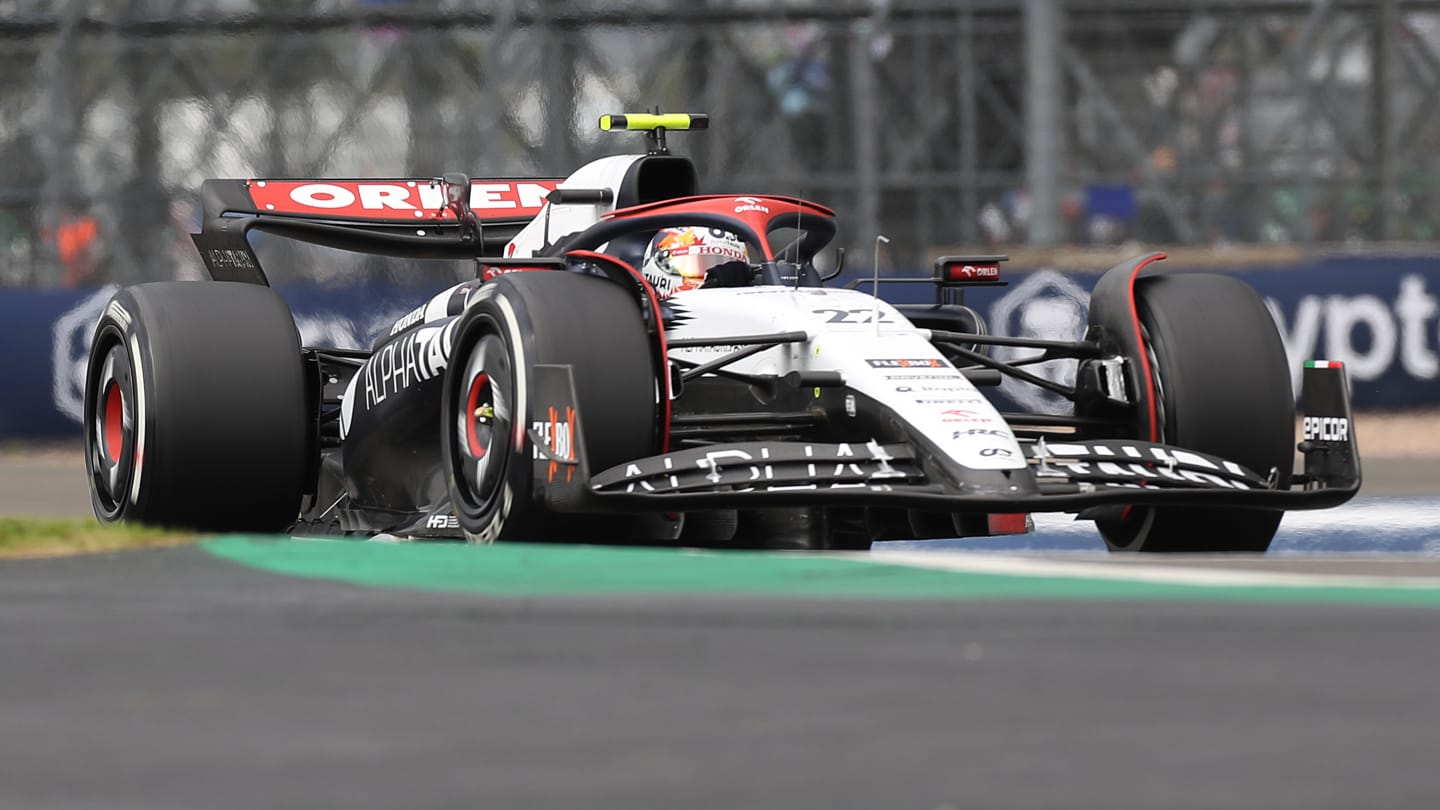
The leading edge of the floor of the AT04 has now been raised
The out-washed air is used to increase the speed of the air going through the underfloor tunnels. The air pressure difference between the exterior and the underfloor is what defines the floor’s downforce. The underfloor airflow rushes to fill the lower pressure areas – and the faster it can be induced to flow, the greater the downforce. The better the floor can be sealed by the exterior airflow, the faster the underfloor air will flow.
But there is only so much volume to work with. Defining the optimum split between underfloor airflow and that out-washed around the sides is crucial – and this will be determined in part by how fast the airflow can be induced to go. This is where vortex generators – small protruding extensions which trip the air into spinning circles, which accelerate the air all around it – are very useful.
TECH TUESDAY: Under the hood of McLaren’s sensational Silverstone step change in pace
So in addition to the AlphaTauri’s raised floor – which increases the underfloor flow volume – the roof of the tunnel entry and the shapes of the vanes have all been changed to induce greater vortex power, so energising that newly-increased volume.
The new flow resulting from the floor and fence changes has required new floor edge geometry to re-optimise the flow. The single wing profile permitted within the floor edge has been extended inward towards the underfloor at the rear through a cut-out. This manipulates the air pressure to give the floor edge a better seal, allowing the tunnels to generate more downforce.
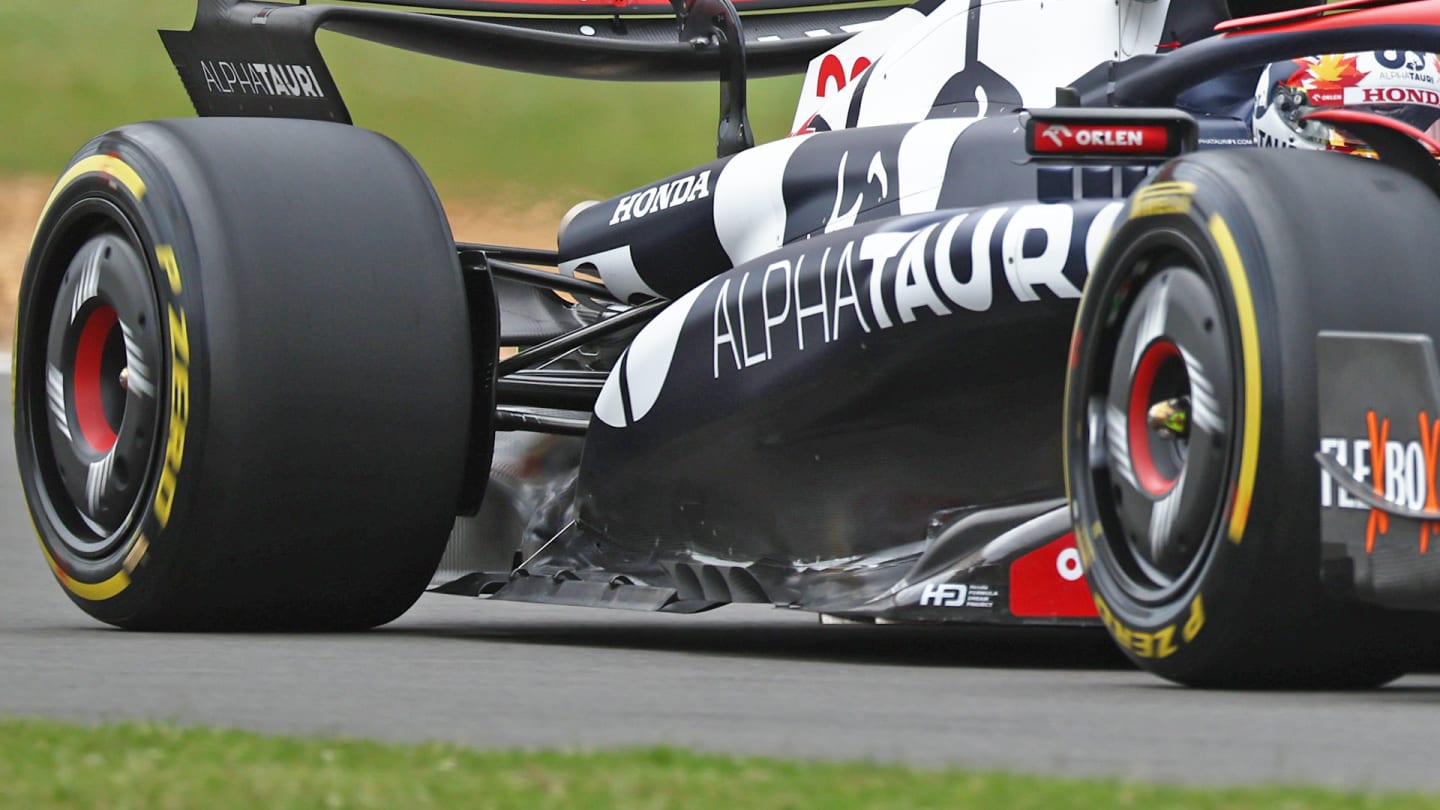
The permitted single wing within the floor edge has been extended, turned inward at the rear and directed into the underfloor through a cut-out, thus forming a device which manipulates the air pressure to give a better seal for the underfloor tunnels
Rear bodywork
The upper rear bodywork has been widened to form an enhanced cannon shape. AlphaTauri claims this reduces the damage to the airflow caused by yaw and steer.
The wider section of bodywork increases the static pressure, making it more resistant to the turbulence introduced to the airflow in that part of the car as it is turned across the oncoming air. It makes the airflow there more robust and consistent, and this in turn allows the floor edge beneath to work more effectively.
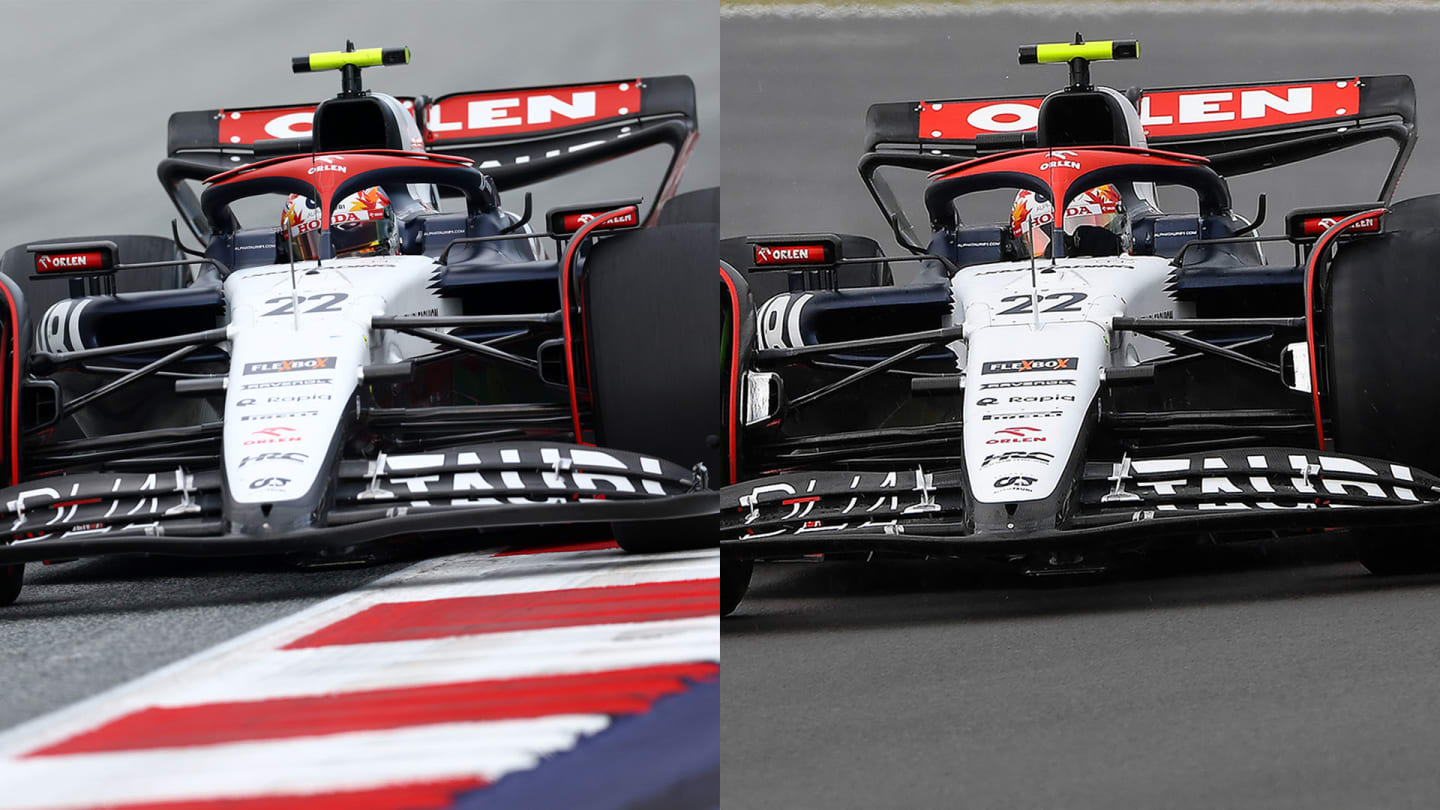
The rear wing has been re-designed on the AT04 (the Austria-spec one is shown on the left, the Silverstone one on the right), along with a widening of the rear bodywork
Diffuser
The diffuser walls at the tunnel exits have been bowed out, giving greater lateral expansion of the airflow, and this in turn pulls the airflow wake out with it from the rear tyres, reducing the blockage that forms for the diffuser.
Rear wing
The medium downforce rear wing has been modified, with more loading in the centre and less at the outer ends. This more elliptical shape should give comparable downforce for less drag.
TECH TUESDAY: The secrets behind Red Bull’s floor design and how it differs to rival teams’
Given the size of this upgrade, it was disappointing for the team that it failed to get either car out of Q1 at Silverstone and that Yuki Tsunoda and Nyck de Vries should finish a respective only 16th and 17th in the race.
That said, the Silverstone layout is not one which places as much emphasis on slow corner performance as the upcoming Hungaroring.

While there wasn’t a McLaren-style jump for AlphaTauri at Silverstone, the team were pleased with how the upgrades performed – with more due on the car at the Hungaroring
Although the pressure taps taken at Silverstone suggested that the updates were giving the desired boost in downforce, the car’s balance was not optimised. Chief Race Engineer Jonathan Eddolls commented on Friday night at Silverstone: “Analysis showed that the update is actually working well. We made further changes to the car in FP2, but it’s fair to say we didn't hit the sweet spot with either car in terms of balance on the soft tyre short runs, lacking front-end, which is a lap time killer here.
“High track temperatures exacerbated the front tyre overheating, which resulted in a lack of front grip, so we think there is a step of lap time to come with better balance.
BUXTON: Could Ricciardo’s racing return be the first step back to a seat at Red Bull?
“In summary, the aero update shows gains in the data and the focus of the overnight work will be to see what is required with set-up and driving, to utilise this extra performance and turn that into lap time.”
Technical Director Jody Egginton added: “The aero update we have introduced here appears to be broadly in line with expectations, but it has not been enough to move us forward in Silverstone. The further planned aero update for Hungary will be an important step to start addressing this, to get back on track towards achieving our objectives.”
Ricciardo's Return Interview - “I’m not scared of anything. I’m ready”
YOU MIGHT ALSO LIKE
News ‘It's all about patience’ – Bortoleto admits transition from F2 title winner to F1 backmarker is ‘not easy’
Feature The ‘important’ lessons F1 is learning from the development of sustainable fuels in F2 and F3 ahead of 2026
News Bayer admits Lawson left ‘sad and puzzled' by Red Bull seat swap as he predicts New Zealand driver 'will be back and he will be quick'

Feature Theme park fun, discos with Russell and architect dreams – Getting to know the real Kimi Antonelli
